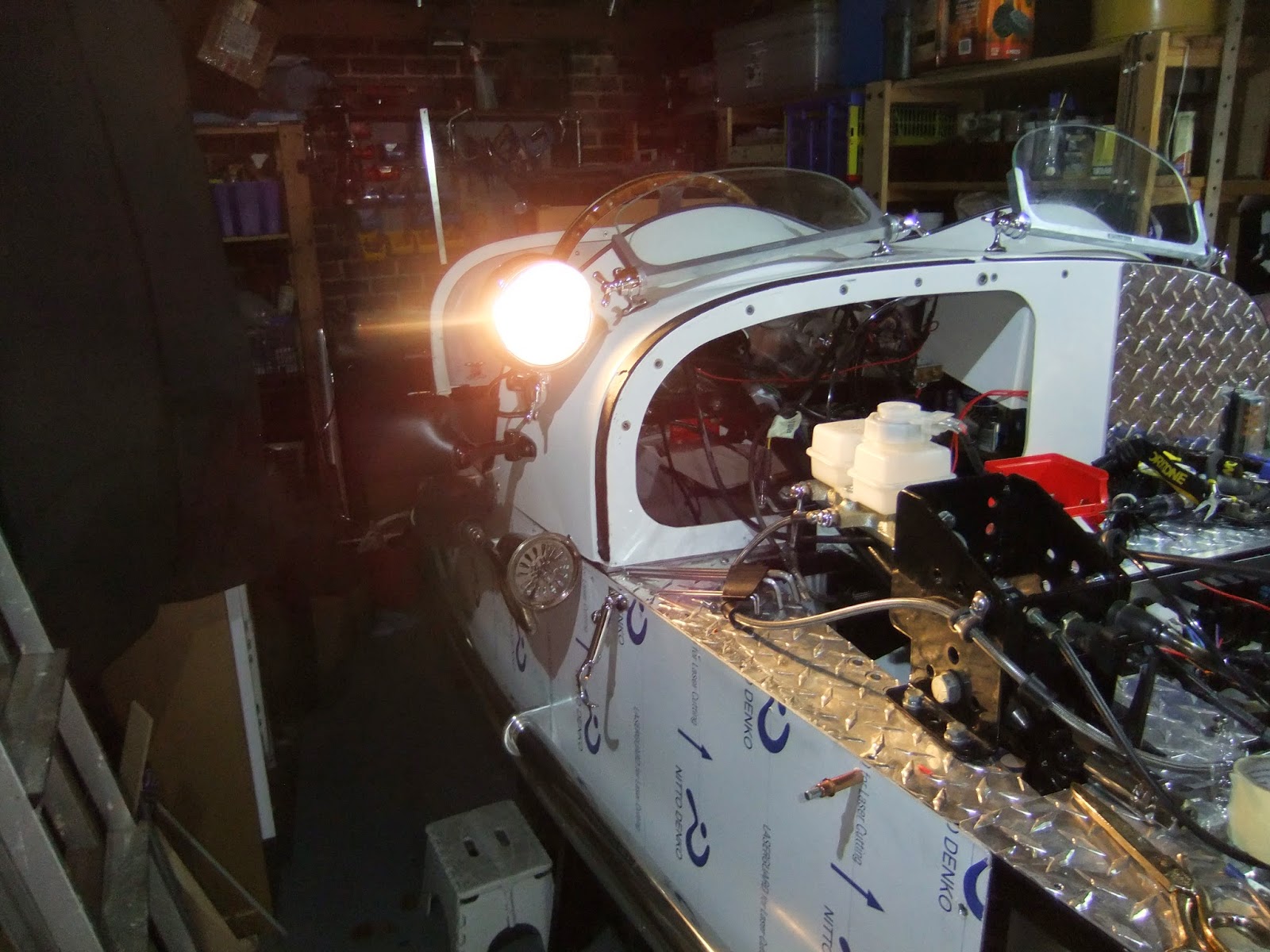I mounted the headlamps and decided where to drill through the shells to mount the indicators, they needed to be as far forward as possible otherwise the curve of the shell would have them pointing at the sky. That done I peeled back the tough outer sheaf of the cable, selected what colour cables I would use, seven of them and cut off the remaining three. I soldered together the wires for the headlamp and indicators and crimped on connectors for the side lamps.
Above photos shows right shell fully connected with lamp dangling and work in progress with the left. I fitted lamps and the peaks, but I didn't like the way the mesh covers fitted, they protruded too far out and for the moment I will dispense with them, maybe I will try to shorten the clips, but more important things to do first.
I ran the cables in split corrugated, sheaf, back to the electric box, cable tying securely as I went. Once in the box I exposed the coloured cables and started to join them together with crimp on connectors. The only cables I won't connect together are the two green and the purples ones as they are for the indicators, green for the left and purple for the right
I am only temporarily connecting into the eight way block until I am certain that I have the main and dipped wires the right way round and I will only be sure of that when the column mounted indicator/dip switch is fitted, guess what? that is the next job.










